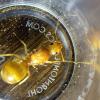- Formiculture.com
- Forums
- Gallery
- Members
- Member Map
- Chat

Queens dying after laying eggs — need advice
Started By
D-4057
, Aug 9 2025 12:13 PM
3 replies to this topic
#1
 Offline
-
Posted August 9 2025 - 12:13 PM
Offline
-
Posted August 9 2025 - 12:13 PM
Several newly mated ant queens. After laying eggs and eggs hatch into larvae, queens weaken and die within 2-3 days.
I replace the cotton in the test tube and open it a couple of times to let air in. I keep temperature and humidity stable and suitable (about 24-27°C and enough humidity).
I feed the queen and larvae and keep the environment clean. I use moist cotton and sponge to maintain humidity.
I provide proper ventilation and prevent mold and contamination.
Still, queens weaken and die after laying eggs, even when I open the cotton only twice.
Could the queens be weak or sick? Do they need special nutrition? Please advise.
Species: [camponotus]
I replace the cotton in the test tube and open it a couple of times to let air in. I keep temperature and humidity stable and suitable (about 24-27°C and enough humidity).
I feed the queen and larvae and keep the environment clean. I use moist cotton and sponge to maintain humidity.
I provide proper ventilation and prevent mold and contamination.
Still, queens weaken and die after laying eggs, even when I open the cotton only twice.
Could the queens be weak or sick? Do they need special nutrition? Please advise.
Species: [camponotus]
#2
 Offline
-
Posted August 9 2025 - 12:43 PM
Offline
-
Posted August 9 2025 - 12:43 PM
Fact: Well over 99 percent of queens die in the wild. Only a very select few found colonies. Many queens are genetically unfit or weak. If you have a large group of queens, a lot of them will likely not make it. For Camponotus queens, in some cases I lose half of my queens. I have never not lost a queen. Only the fittest will survive.
- Ants_Dakota likes this
"God made..... all the creatures that move along the ground according to their kinds (including ants). And God saw that it was good. Genesis 1:25 NIV version
Keeping:
#3
 Offline
-
Posted August 9 2025 - 2:45 PM
Offline
-
Posted August 9 2025 - 2:45 PM
I would bump the temperature up a bit. Also the thing is while ants do die a lot in the wild, that number goes down significantly in captivity because we can negate a lot of specs. What are you feeding? Do you have any pictures?
Currently: Considering moving to Australia
Reason: Myrmecia
Reason: Myrmecia
#4
 Offline
-
Posted August 10 2025 - 2:22 AM
Offline
-
Posted August 10 2025 - 2:22 AM
Camponotus queens and their larvae do not need feeding. It is also not necessary to change cotton or frequently open up tubes with founding queens inside. In fact, you should not open them at all. Though I doubt stress would kill the queens outright, frequently meddling with founding queens will certainly not help your situation.
"The ants are a people not strong, yet they prepare their meat in the summer." Prov. 30:25
Keep ordinary ants in extraordinary ways.
Keep ordinary ants in extraordinary ways.
1 user(s) are reading this topic
0 members, 1 guests, 0 anonymous users
















